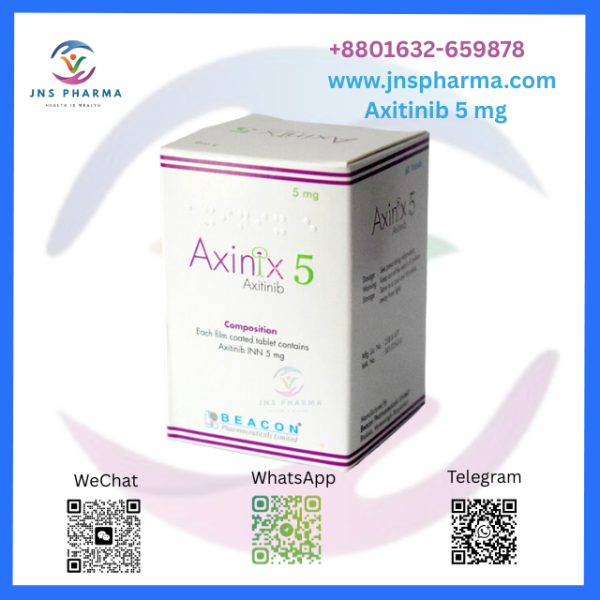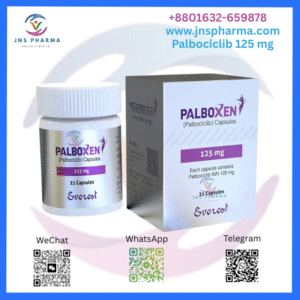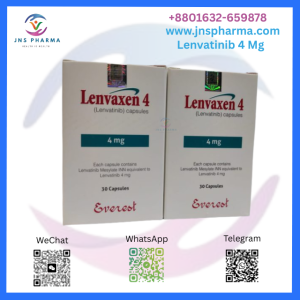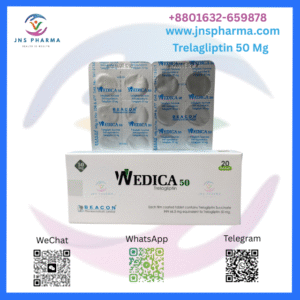Don't miss our holiday offer - up to 50% OFF!
Axinix 5 mg (Axitinib)
The primary active ingredient of Axinix 5 mg is Axitinib, a powerful and specific tyrosine kinase inhibitor (TKI). A significant problem for which Axinix uses is advanced malignancy of the cell cycle (RCC), a type of kidney cancer. Axinix was designed to target certain pathways of excrescence growth and angiogenesis( new blood vessel formation that feeds excrescences). Axinix is a significant advance in targeted cancer treatment.
Active Component and Mode of Action
The active part of Axinix is Axitinib, a TKI small molecule that inhibits the production of vascular endothelial growth factor receptors (VEGFRs) 1, 2, and 3. These receptors are the core of the angiogenesis process, which excrescences calculate on to gain nutrients and oxygen. Inhibiting these channels, Axitinib starves the excrescence of blood force, eventually suppressing its proliferation and growth.
Axitinib’s mechanism of action renders it a high seeker for cases who haven’t responded positively to former curatives, such as cytokine therapy or other VEGF-targeting curatives.
Suggestions and operation
Axinix 5 mg is indicated for the treatment of adult cases with advanced renal cell carcinoma ( RCC), especially if the disease has progressed after former systemic therapy. Axinix 5 mg may be given as monotherapy or in combination with other anticancer curatives, either grounded on the case’s status and the croaker’s treatment authority.
Lozenge and Administration
Axinix is generally administere orally in the form of a tablet. Cure should be start at 5 mg twice daily, with or without refections, roughly 12 hours piecemeal. Lozenge needs to be regulated as permitted by adverse responses and remedial or tolerability effects. Axinix must be taken daily at a fixed time and shouldn’t be masticated, crushed, or divided.
Axinix treatments must be initiate and managed by a qualified doctor with knowledge of chemotherapy for cancer. Regular follow-ups are demanded for covering efficacy as well as control of side effects.
Preventives and Warnings
The case’s full medical history must be studied before using Axinix. Caution is demand in cases with
Hypertension: Axitinib can raise blood pressure, thus, it needs to be monitor and managed regularly.
Impairment of the Hepatic System. When there is hepatic impairment, the lozenge should be acclimate.
Bleeding or Thromboembolic Events The medicine may increase the risk of bleeding or thromboembolic events.
Thyroid Dysfunction Thyroid function can be assesse by Axitinib, and thyroid tests be performe periodically.
Axinix should be avoid during gestation and lactation since it can harm the fetus or the lactating child.
Side effects
As with all cancer treatments, Axinix might have side effects, but they aren’t experience by everyone. Some of the common side effects include
Fatigue
Diarrhea
Loss of appetite
Nausea and puking
Weight loss
High blood pressure
Greenishness, pain, and swelling of hands and bases(hand-bottom pattern)
Voice changes( hoarseness)
Hypothyroidism
Hemorrhage, thromboembolic events, and stomach perforation are less severe but dangerous adverse effects. Patients are advis to seek immediate attention if they witness any unusual symptoms.
Medicine relations
Axinix may have an commerce with other medicines, especially those that affect the CYP3A4 enzyme, such as certain antifungals, antibiotics, and antiepileptics. One should inform the croaker about all the drugs, supplements, and sauces that one uses.
Storage and Handling
Advance renal cell carcinoma can now be treate with Axinix 5 mg (Axitinib), a targeted medication. Through inhibition of the VEGFR pathways, it suppresses excessive angiogenesis and cancer progression. With side effects, yet because of its efficacy in perfecting progression-free survival, it’s a welcome addition to ultramodern oncology. Like everything else, it has to be give under close medical supervision with regular follow-ups to gain maximum benefit and patient safety.







Reviews
There are no reviews yet.